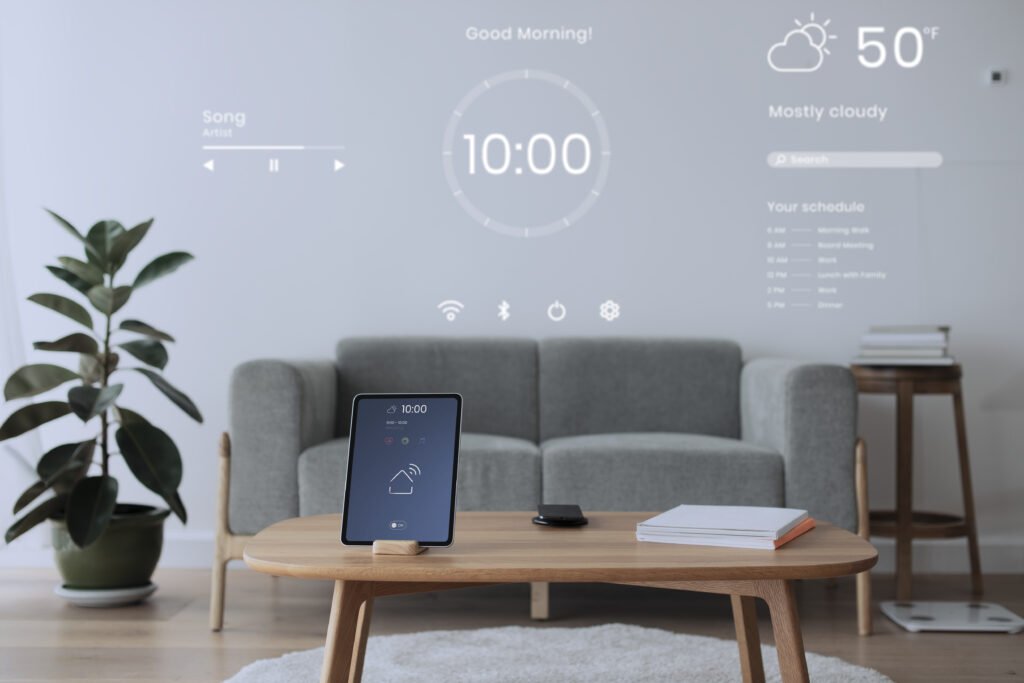
Start Your Modern Smart Home in 2024
In today’s evolving tech world the idea of a home is becoming more common. By combining gadgets and systems homeowners can now experience improved convenience, comfort, and security like never before. If you’re thinking about jumping into the home trend in 2024 you’ve landed in the spot. In this guide, we’ll take you through the steps to start a smart home and elevate your home intelligence.
Assess Your Needs and Budget
Before immersing yourself into the realm of home tech it’s crucial to assess your needs and set a budget. Figure out which aspects of your living space you want to automate or manage from afar—like lighting, security, entertainment, or climate control. Also, think about how you’re ready to spend on turning your place into a sanctuary. This initial stage will help you prioritize your purchases and make choices along the way.
Choose a Smart Home Hub
At the core of any home system is a hub that acts as the central command, for all connected devices.
In the year 2024, you have a variety of choices to consider. These options range from voice-controlled assistants, like Amazon Alexa, Google Assistant, and Apple HomeKit to specialized home hubs such as Samsung SmartThings or Hubitat Elevation. Your decision on the hub, for you will be influenced by your preferences the technology you currently use (if any) and how well it works with other devices you intend to integrate into your smart home setup.
Invest in Smart Devices:
Once you’ve picked out a hub it’s time to start getting some smart gadgets that suit your needs and preferences. You have a range of options, from thermostats and lighting systems to security cameras and door locks. In 2024 many manufacturers have upped their game by adding features like intelligence (AI) integration, facial recognition, and predictive analytics to make smart home devices even more functional and secure. Make sure to do your research and pick products that offer the features you want while being compatible with your chosen hub.
Establish Connectivity
A key part of setting up a home is making sure all your devices can communicate seamlessly. Smart gadgets use Wi-Fi or Bluetooth technology to talk to each other and the central hub.. In 2024 there have been improvements in connectivity with the rise of 5G networks and the introduction of mesh networking solutions boosting the reliability and speed of data transfer, in homes. Think about optimizing your home network and exploring connection options for a dependable smart home setup.
Customize Automation and Control
A significant advantage of having a home is the ability to automate tasks and control devices from a distance. Make use of functions like setting schedules, geofencing, and using voice commands to tailor your home setup to match your lifestyle. Whether it involves adjusting the thermostat based on your preferences turning off lights as you leave the house or receiving notifications, from security cameras customization plays a role in maximizing the advantages of smart home technology.
Prioritize Security and Privacy
As you incorporate devices into your home environment it’s crucial to prioritize security and privacy to protect your personal data and belongings. In 2024 manufacturers have integrated encryption methods, multi-factor authentication processes, and secure cloud storage options to minimize security threats. Additionally, consider implementing practices such as software updates creating passwords, and segmenting your network to strengthen the security of your smart home.
Embrace Integration with Ecosystems;
Given the range of smart home devices available from various brands ensuring interoperability and ecosystem integration has become increasingly important. Seek out products that support recognized industry standards, like Zigbee, Z Wave or Thread to guarantee compatibility and smooth integration with your chosen hub.
In the year 2024, numerous businesses have also adopted open-source systems and collaborations to facilitate communication, across devices and improve the compatibility of home networks.
Stay Informed and Adapt
The world of home technology is always changing, bringing forth gadgets, features, and standards on a regular basis. Keep yourself informed about the trends, progressions, and best practices, in the field to ensure that your smart home stays current and secure. Be ready to adapt and broaden your home setup as your requirements evolve and as new technologies emerge keeping your home at the forefront of innovation in 2024 and beyond.
In summary, establishing a home in 2024 presents opportunities to improve convenience, comfort, and security in your living space. By following the steps outlined in this manual you can kickstart your journey towards a home confidently armed with the knowledge and resources needed to make informed decisions and create an intelligently automated living environment.
Common Questions About How to Start a Smart Home
What is a smart home?
A modern home refers to a living space equipped with interconnected gadgets and systems that can be controlled and automated remotely to enhance convenience, energy efficiency, security, and overall comfort.
What are the benefits of having a smart home?
Convenience; Streamlines tasks, through automation.
Energy Efficiency; Optimizes energy consumption leading to cost savings.
Security; Boosts surveillance capabilities and offers real-time alerts.
Remote Management; Allows for device control from any location.
Integration; Ensures interaction among devices improving functionality.
What types of devices can be included in a smart home?
Although not always required a hub acts as a central control center, for managing and coordinating home gadgets. It can simplify operations. Improve compatibility between devices and systems.
How do smart home devices communicate with each other?
devices in homes communicate wirelessly using technologies, like Wi-Fi, Bluetooth, Zigbee, Z Wave, or Thread. Some gadgets may also use wired connections or a mix of both for communication.
Do I need a hub to create a smart home?
Although not always required a hub acts as a central control center, for managing and coordinating home gadgets. It can simplify operations. Improve compatibility between devices and systems.
How safe are smart home devices?
Smart home devices utilize security features like encryption, authentication, and secure cloud storage to safeguard user information and prevent entry. Nonetheless, users should follow recommended practices such as using passwords and keeping their software up, to date to reduce cybersecurity threats.
Can I install smart home devices myself?
Many smart home devices are designed for installation. Can be easily configured by homeowners without needing professional help. However, for systems, it may be necessary to seek professional installation services depending on the user’s technical skills and the complexity of the setup.
Do smart home devices work well together?
The compatibility of home devices can vary based on factors like manufacturers, communication protocols, and ecosystem alignment. It is important to research compatibility and select devices that seamlessly integrate with each other or consider investing in a hub that supports interoperability.
How can I ensure my smart home remains private and secure?
To ensure privacy and security in a home users should;
Utilize unique passwords for each device.
Activate two-factor authentication wherever possible.
Regularly update device firmware and software.
Secure the home Wi-Fi network with encryption and a robust password.
Review. Adjust privacy settings on devices to control data collection and sharing.
Are smart homes suitable, for everyone?
Smart homes provide advantages to users from technology enthusiasts desiring convenience to homeowners aiming to improve energy efficiency and security. Nevertheless, those, with knowledge or apprehensions regarding privacy and security should thoroughly assess the pros and cons before embracing smart home technology.


